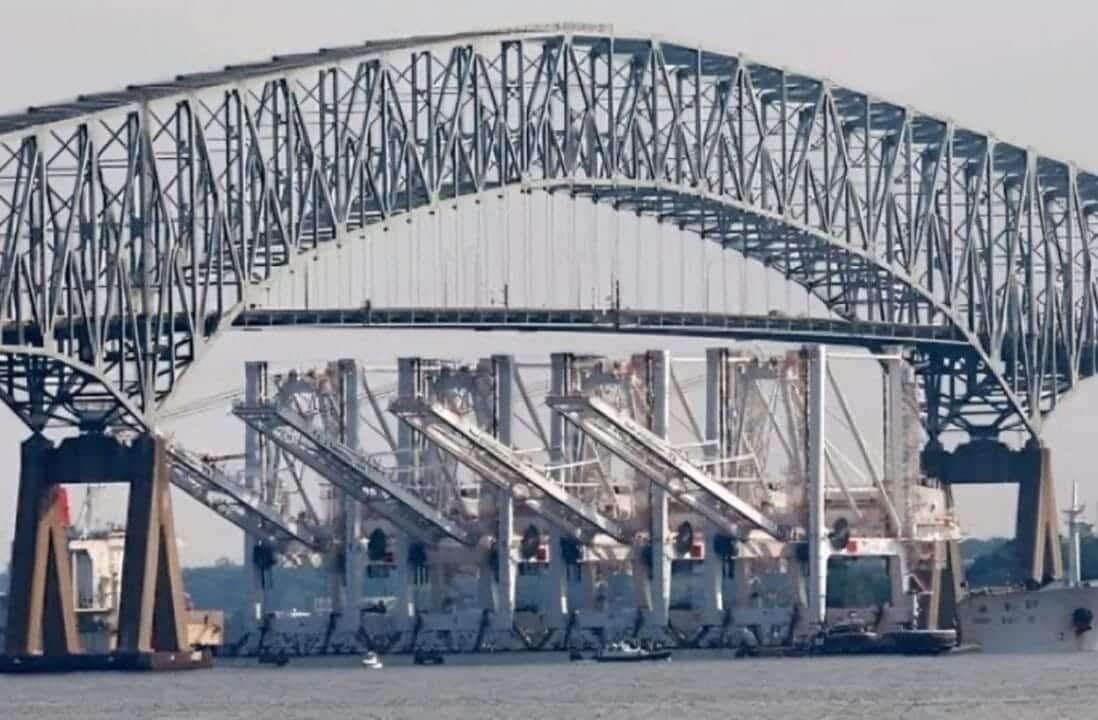On a fateful night in March 2024, Baltimore faced an unexpected disaster when the Francis Scott Key Bridge collapsed after a collision with a cargo ship. This shocking event not only dunked vehicles into chilly waters but also stirred up a whirlwind of questions about infrastructure safety and the urgent need for reconstruction efforts that could cost between **$400 million and $1 billion**.
The Accident That Shook Baltimore
Picture this: a calm, quiet night disrupted in an instant. The cargo ship, sailing towards Colombo, Sri Lanka, experienced a **sudden electrical failure** in its navigation system. Can you imagine? One minute everything’s running smoothly, and the next—BAM!—that behemoth crashed into a support pillar of the bridge, sending a vibrant piece of Baltimore’s infrastructure crumbling into the Patapsco River. Talk about a scene straight out of a disaster movie!
Causes of the Bridge Collapse

When I dug deeper into this incident, I learned that our beloved bridge, which had been a sturdy part of the city’s landscape since 1977, didn’t stand a chance against the impact. The **force of that collision** was likened to about 50 hefty trucks barreling down the highway at full speed! That’s one heck of a punch. In a flash, vehicles were hurled like rag dolls into the icy depths below, and suddenly, our city’s safety net was on shaky ground.
Impacts on Local Economy and the Port of Baltimore
Now, let’s talk about the domino effect this had on Baltimore’s economy. The **Port of Baltimore**, a crucial player in U.S. commerce, felt the blow hard. Without the bridge, the logistics of transport turned into a tangled mess, impacting countless jobs and the livelihoods of many. Just think about it—thousands of workers were left in the lurch, scrambling to make sense of the chaos. The estimated costs for reconstruction are staggering, reflecting the scale of this crisis and the urgency of getting our infrastructure back on track.
Challenges for Bridge Reconstruction
Confira esse conteúdo no video abaixo

As the dust began to settle, the city officials faced a monumental task ahead. Rebuilding the bridge wasn’t just about throwing some steel and concrete together. It required **a massive cleanup effort**, meticulous planning, and coordination among countless agencies. The hope is to construct a new bridge that doesn’t just meet our current needs but is also a beacon of modern technology and sustainable design. I mean, let’s shoot for resilience this time, right?
Comparing Infrastructure Safety
Interestingly, this incident serves as a stark reminder of differing infrastructure standards worldwide. Looking elsewhere, like in Brazil, I found myself thinking about the **Rio-Niterói Bridge**, known for its durability. It’s almost as if Baltimore’s collapse is waving a flag, urging us to **reassess our infrastructure safety measures**. If Brazil can keep their bridges standing strong, surely we can learn a thing or two!
The Role of Technology in the Reconstruction
Innovation will be key in this whole process. Can you imagine employing cutting-edge technology like smart sensors on the new bridge? These gizmos can monitor the structure’s health in real-time. It’s almost like giving the bridge a **check-up** every so often! With the right innovative approach, we can ensure that our new structures are not just built well, but built smart.
Future Perspectives for Urban Transport
As we look ahead, the potential for future urban transport is quite thrilling. I can almost hear the wheels turning in the heads of city planners and engineers. There’s a golden chance here to reimagine how we get from point A to point B. Will we embrace **green transportation**? Who knows! This could be the moment that ushers in electric buses or enhanced bike lanes—just think of the fresh breeze as you ride towards your destination!
The Importance of Resilient Infrastructure
At the end of the day, it’s all about being prepared. If there’s anything this catastrophe taught me, it’s that resilient infrastructure is not just a luxury, it’s a lifeline. We’ve got to invest not only in rebuilding but in enhancing our structures to withstand whatever Mother Nature—or a misplaced cargo ship—throws our way.
Conclusion: Lessons Learned and the Road Ahead
In reflecting on the Francis Scott Key Bridge incident, I’m hit with a realization: each setback carries with it valuable lessons. We need to face the music, learn from our past, and **build better for the future**. So, let’s rally together, support our workers, and create a safe, robust infrastructure that not only does its job but also stands as a testament to our resilience. With each challenge, we grow stronger, and together, we can turn this crisis into a stepping stone towards a brighter tomorrow.


